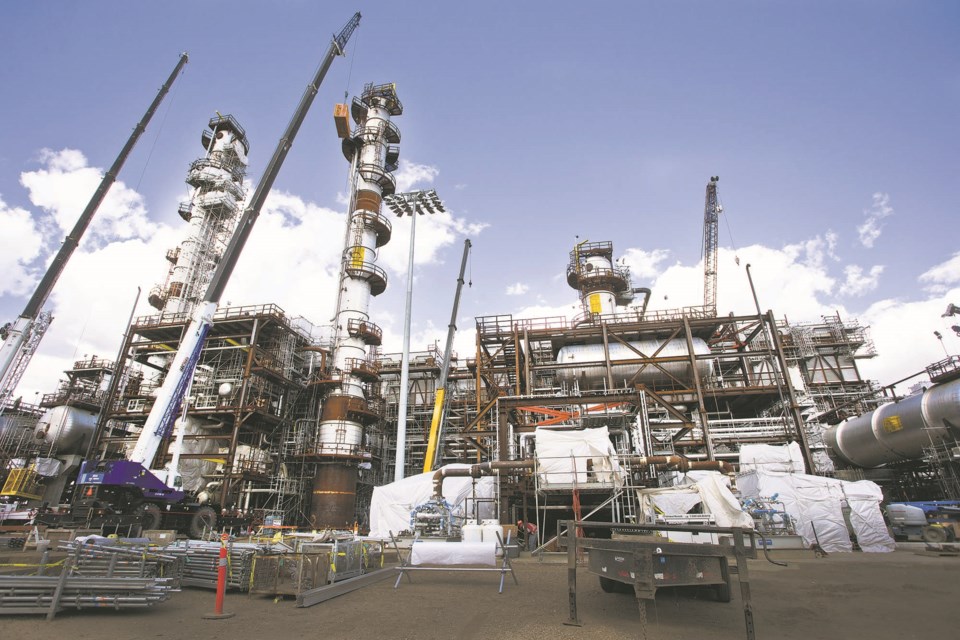Alberta is extremely well-positioned to compete in the global economy, ATB's chief economist told Alberta’s Industrial Heartland Association's annual conference last week.
Mark Parsons spoke to the conference about Alberta’s current and future economic landscape.
“We're facing the same headwinds as everybody else," Parsons said. "We have high inflation; consumers are getting squeezed. We have high interest rates; that's affecting Albertans. It's affecting businesses.”
But, Parsons said, Alberta has an advantage in people and resources, “particularly energy.”
Alberta’s population has grown “4.5 per cent year to year to April 1,” he said, compared to the national growth of 3.1 per cent.
“It's a full one-and-a-half percentage point (above) the national average. We haven't seen that growth in population growth rate since 1981,” he said.
In a one-year period, he noted, 200,000 people were added to the province. Normally, in a booming economy, “you might expect 100,000.”
“We get about 20,000 people a year just by having kids,” he said.
Parsons compared the population expansion as equal to two cities the size of Red Deer, and said the migrants are young.
“Migrants slow the aging process,” he said.
Alberta’s growth is mostly coming from international locations of both landed and non-permanent residences; however, there are also people coming to Alberta from other provinces.
“(The inflow of people) is driving a wedge between Canada's population growth and Alberta’s population, when you see that divergence it’s because of inter-provincial inflows,” he said.
Parsons said inter-provincial migration is normally caused by the job market. Currently, Alberta has “a slightly higher unemployment rate than the national average,” so jobs are only part of the story.
The job market is going through something really “fascinating.”
“We have a combination of high job vacancies and unemployment that's maybe a little bit higher than you might expect,” he said.
One reason behind this is it can take time for newcomers to get integrated into the labour market. In addition, the food and accommodation sector has come “roaring back,” from the COVID-19 pandemic, but it’s not easy to get former workers back to the industry to fill job vacancies.
Parsons says housing costs throughout the country are playing a key role in the influx of new Albertans.
“The biggest part of the story this time around is housing,” he said.
People moving here from Toronto or Vancouver find housing to be relatively affordable in Alberta.
“We think that housing starts need to pick up next year, around 30,000, this year to about 38,000. And even still, we're going to be struggling to keep up with all the population growth,” he said.
Parsons said people are still spending money on things like cars and shoes, but said there are signs consumer spending is slowing.
“We're starting to see like a per capita decline in retail sales … These aren't meaningful declines yet, but we expect that retail sales consumer spending will kind of flatten out the rest of the year,” he said.
Parsons said one of the reasons he thinks Alberta is going to outperform this year is the energy capital expenditures that have gone from a low point and are “on the rise.”
“Energy is … such a powerful driver of not only Alberta’s growth, but national growth,” he said.
Alberta exported more energy than Ontario for one month, something that had never happened before July 2022, he said.
“Energy products alone accounted for a greater total value of exports than the other provinces, except Ontario. I think that's shocking. It's a really, really important thing to keep in mind,” he said.
There are some issues, however.
Parsons said labour productivity is down and Canadian growth is slowing in per capita terms. Investment is also lagging.
“Investment is really, really important driver of labour productivity. The concerning trend to Canada is that since 2014, investment — business investment — has been declining. So yes, we saw the big decline in energy investment in Canada. But that hasn't been made up in other areas. So, overall business investment is below where it was, in 2014,” he said.
Parsons called Alberta’s economy very resilient overall on the strength of key fundamentals such as a young population, skilled workforce, high levels of business investment, relative affordability, resource strength, and low-cost feedstock location advantages.
“Alberta has really, really strong fundamentals to build up … When I think about our fundamentals, and I look past the next two years, I'm very, very optimistic about all those prospects,” he said.



